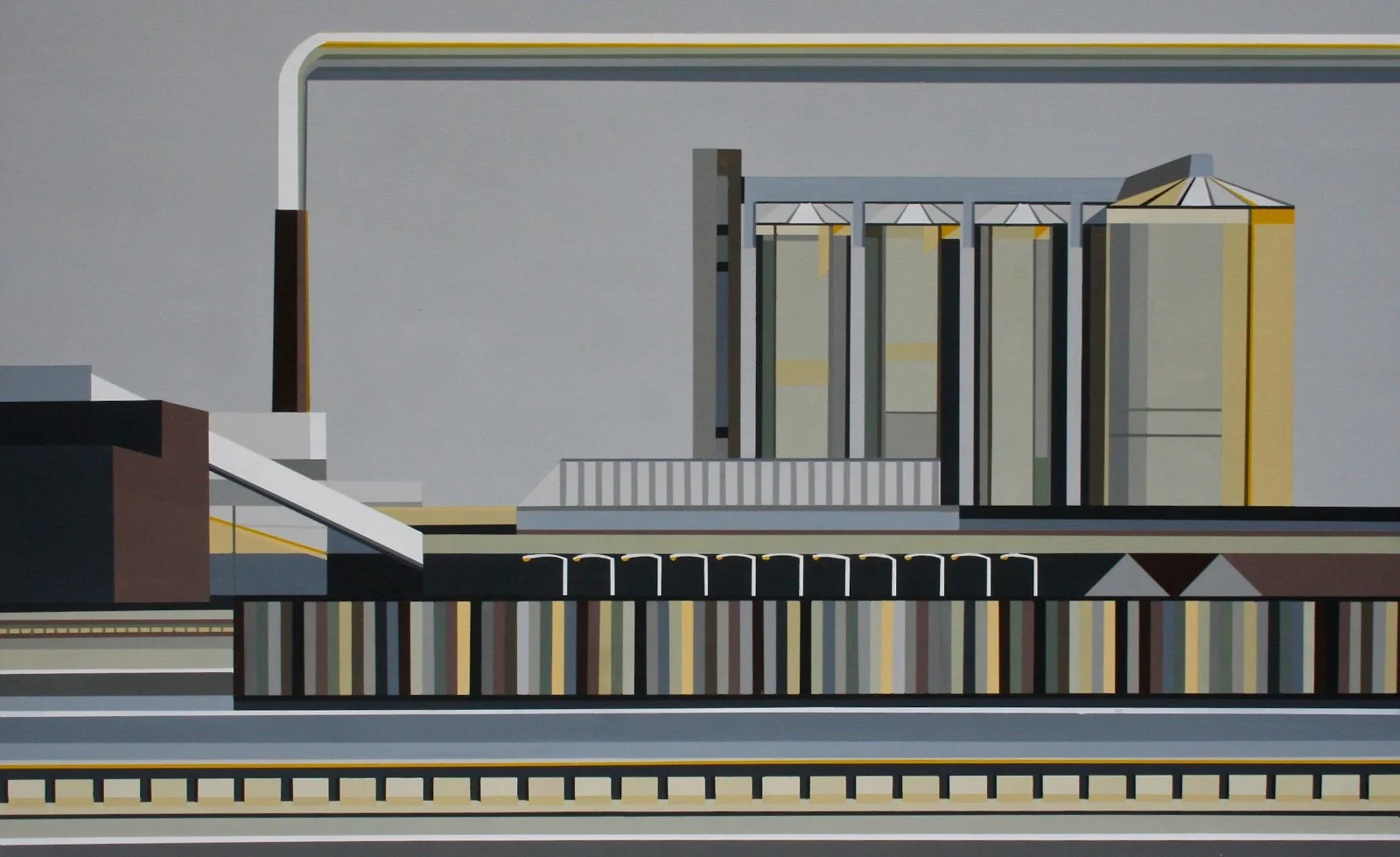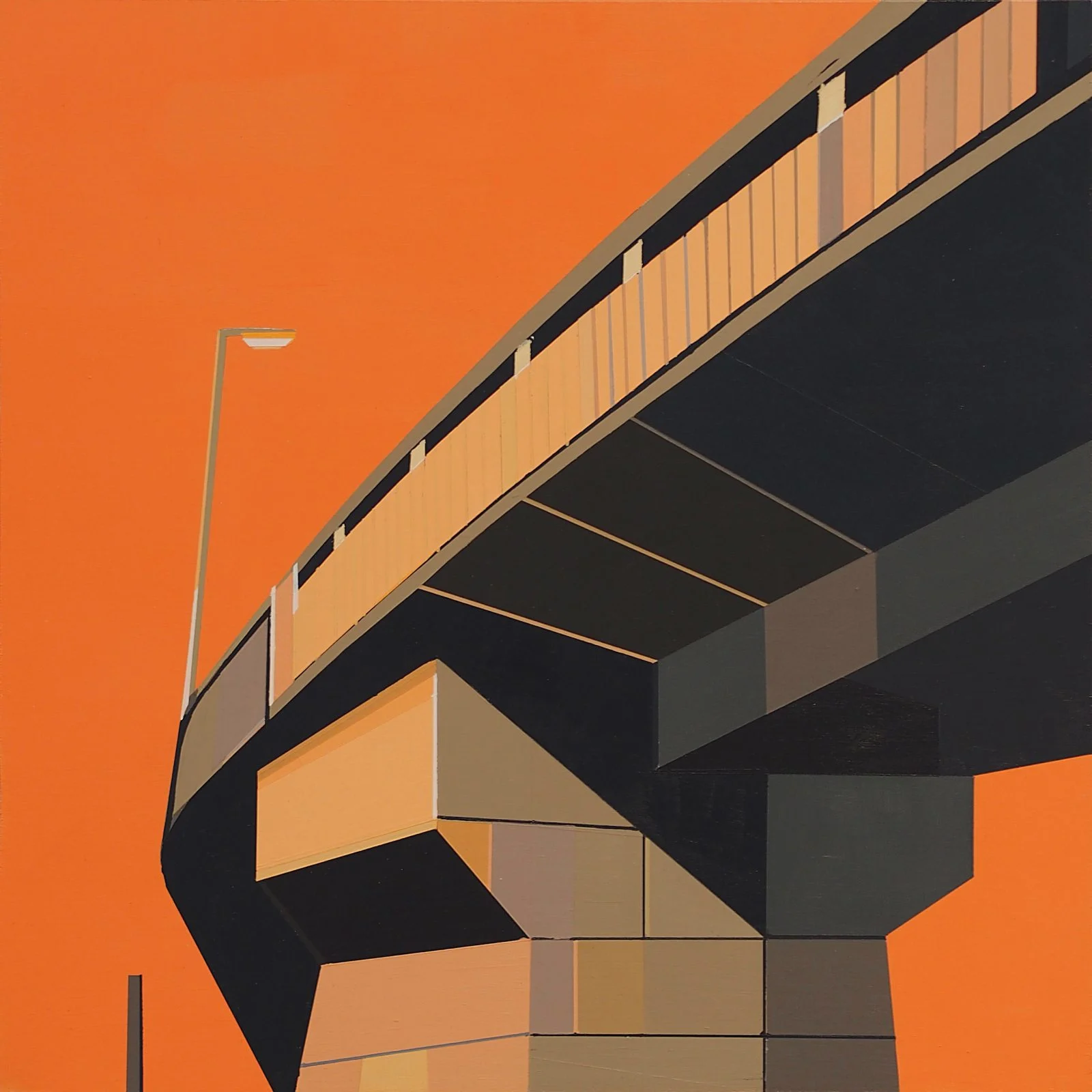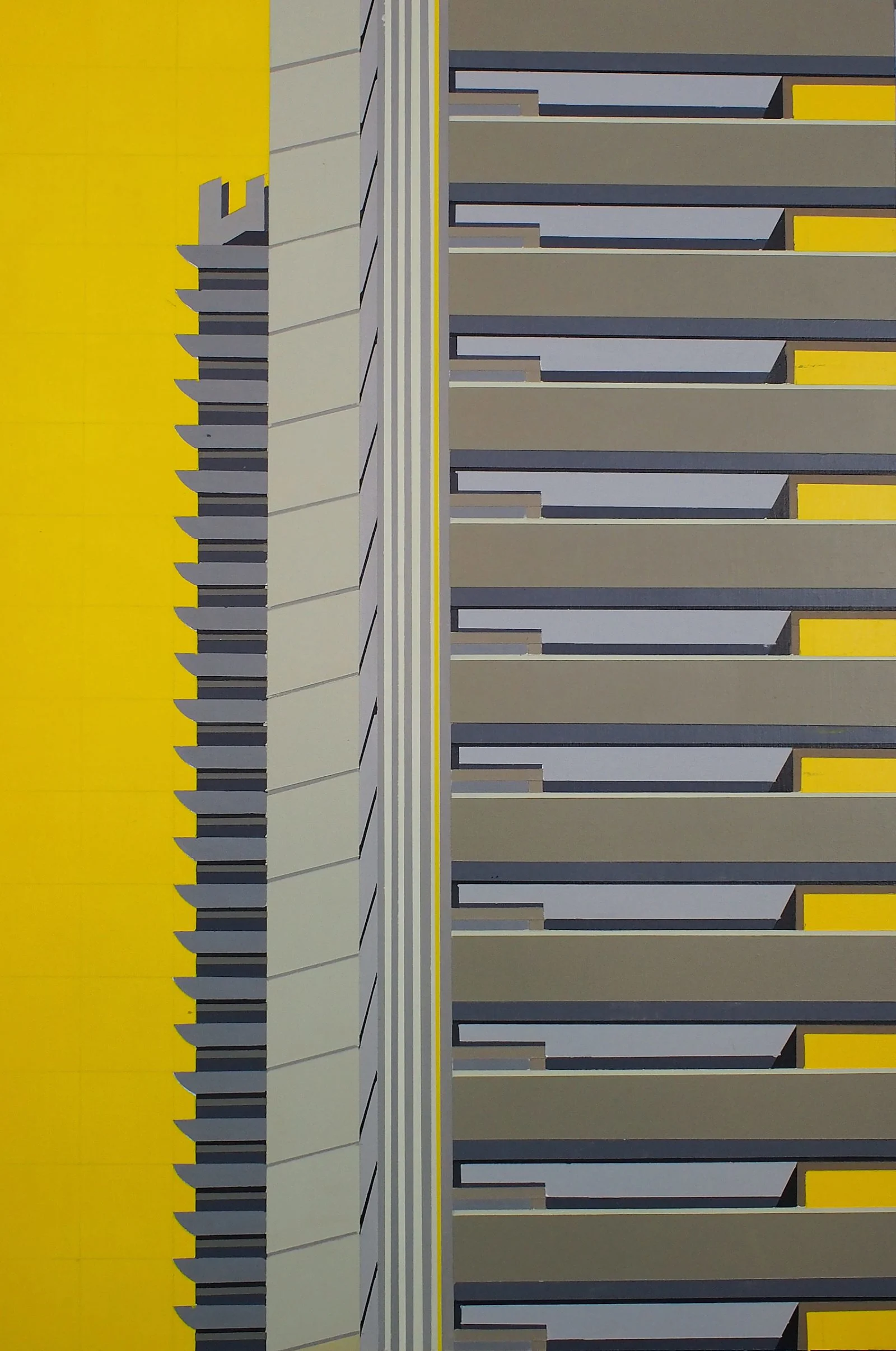
Painting and music continuously cross paths in British artist, singer and songwriter Kate Jackson’s life. After moving to Sheffield age 18 to study fine art, she became increasingly involved in the local music scene and joined a band called The Long Blondes as lead vocalist.
When they split up in 2008, she found herself at a crossroads. After years of navigating her two passions, she has finally found a theme that ties them together – her fascination for the urban and rural landscapes of Britain.

“I used to see the two practices as quite separate things,” she says. Recently though, she noticed that her, “music and art both show what is always there, the everyday landscape which goes unnoticed but is part of our collective psyche as we have all grown up – living in it or walking past it or driving through it.”
In her paintings, this everyday landscape appears in the form of modernist shapes that are often ignored or insulted for their bleak and simple appearance, like the Barbican in central London, the British Sugar Factory in Bury St Edmunds or the motorways of the M25.

“I like structures which are sculptural in the landscape, buildings which contain tonal variations and create different shadows depending on the time of day and strength of light,” she says.
Paying homage to the architectural movement that flourished from the 1950s to the mid-1970s, her current series Abstract Brutalism, “shows these structures, literally, in a different light.” To do this, she manipulates photographs of “familiar and mundane” buildings into more interesting compositions.

After drawing a grid and working out the dimensions in a sketchbook, she transfers the drawing onto wood to start painting. “I use straight edge tape to get such clean lines, and acrylic paint in a layering process much like printmaking or stencilling. The fast drying acrylic paint means that I can build up the color layers quite quickly. The colors give the painting the graphic depth they need – they are almost hyper real.”
Removed of context, people or a backdrop, Kate’s buildings turn into the subject of a painted portrait, like the curvilinear form of a concrete motorway that graces the cover of her debut solo album British Road Movies. “All buildings and roads contain traces of the lives lived within them, or of those who pass them on a daily basis,” she says.

